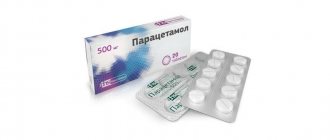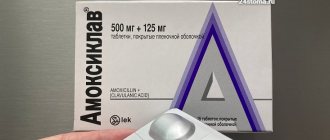- Three-stage pain correction system
- Types of painkillers
- How to relieve pain: a description of the stages of a three-step scheme
- How often does cancer pain occur?
- What is the reason for failure in pain treatment?
- Technologies for managing chronic pain syndromes
- Painkillers for stomach cancer
- Painkillers for lung cancer
Often the first and only symptom of cancer is pain. It causes suffering to the patient, reduces the quality of life, leads to depressive disorders, suicidal intentions and actions.
The fight against pain is a pressing problem in oncology. In order to effectively cope with pain, the doctor must correctly assess its causes, nature, and intensity.
At Euroonko, the area of pain medicine is very well developed. Our doctors use all available methods, including innovative ones.
Three-stage pain correction system
The main method of treating pain in oncology is drug therapy. In the practice of Euroonko, a three-stage pain relief system of non-narcotic and narcotic analgesics is used, which allows you to effectively relieve pain and keep it under control. We take into account the recommendations of the World Institute of Pain (FIPP WIP, USA), the European Federation of the International Association for the Study of Pain (EF IASP).
The method consists of sequential use of analgesics of increasing strength in combination with adjuvant therapy as the pain intensity increases. An important principle is to begin pharmacotherapy immediately when the first signs of pain appear, before a complex chain reaction develops that leads to chronic pain syndrome. The transition to a stronger painkiller is made when all the drugs of the previous step are ineffective in their maximum dosages.
Types of painkillers
Pain relief begins with the prescription of non-steroidal anti-inflammatory drugs (NSAIDs) in tablet form. These include Nurofen, Eferalgan, Nimesil, Diclofenac, etc. If they are ineffective, then at the second stage, combination drugs are prescribed to eliminate moderate pain. They include weak opiates and non-narcotic analgesics. Tramadol is most often prescribed from this group due to its effectiveness and ease of use. The third stage of pain therapy involves the prescription of narcotic analgesics, which help cope with even severe pain. These include buprenorphine, morphine, fentanyl, and omnopon.
Also, corticosteroids - preparations of adrenal hormones - are often used as analgesics. They have a powerful anti-inflammatory effect, especially important for pain caused by nerve compression, headaches caused by intracranial hypertension, and bone pain.
For each patient, medications are selected individually, so there is no universal scheme.
At any stage of pain therapy, analgesics must be taken regularly by the hour. The dose is adjusted taking into account the type and intensity of pain. If the drug becomes ineffective, it is advisable to replace it with an alternative drug of similar strength, but recommend it to the patient as more powerful.
Corticosteroids - preparations of adrenal hormones - are often used as analgesics. They have a powerful anti-inflammatory effect, especially important for pain caused by nerve compression, headaches caused by intracranial hypertension, and bone pain.
Anesthesiologist-resuscitator Vadim Sergeevich Soloviev about opioid analgesics:
Our doctors follow the principles of pain therapy proclaimed by WHO:
- “By mouth” (orally)
means that all injectable forms of analgesics should be excluded and therapy should be carried out using non-invasive dosage forms (tablets, capsules, syrups, transdermal therapeutic systems, rectal forms of drugs, etc.). - “On the clock”
- analgesics should be prescribed regularly according to the schedule, in accordance with the duration of the drug’s effect, without waiting for the development of severe pain, excluding the possibility of “breakthroughs” of pain. - “Ascending”
- the selection of drugs for pain relief is carried out from non-opioid analgesics for mild pain, “mild” opioids for moderate pain and strong opioid analgesics for severe pain, as the pain intensity increases, in accordance with the “WHO pain management ladder” - “Individual approach”
- implies the need for an “individual” selection of an analgesic and is based on the selective selection of the most effective analgesic in the required dose with the least side effects for each individual patient, taking into account the characteristics of his physical condition. - “With attention to detail”
- involves taking into account the characteristics and details of each patient, of course, prescribing co-analgesics and adjuvant agents as the need arises, and monitoring patients.
Classification of drugs
The essence of the action of painkillers is their effect on the functions of the central nervous system, inactivation of receptors that cause pain. According to the mechanism of action, they are distinguished:
- narcotic drugs - inhibit the receptors of the brain tissue itself, depress the respiratory and cough centers, and have many negative effects, including hallucinations;
- non-narcotic, devoid of psychotropic influence, most popular among doctors;
- mixed – partially demonstrate the effects of the first and second groups;
- peripheral - work in the tissues of the body, relieving nervous excitement and inflammation.
For patients, what is more important is not whether a drug belongs to a pharmacological group, but rather the specifics of its use, contraindications, and side effects.
Pain is a symptom of numerous pathological conditions. Narcotic and non-narcotic painkillers relieve these negative symptoms, which significantly worsen the quality of life, sometimes making the patient’s existence unbearable. Drugs are used in the terminal stages of diseases to alleviate the patient's serious condition. Non-narcotic analgesics are more widely used.
How to relieve pain: a description of the stages of a three-step scheme
Low pain therapy
The patient is prescribed non-opioid analgesics: NSAIDs (Ibuprofen, Diclofenac, Ketoprofen, etc.), Paracetamol. When choosing a drug, the toxicity to the liver and kidneys inherent in all non-opioid analgesics, as well as the gastric toxicity of non-selective NSAIDs, and the risks from the cardiovascular system when using selective NSAIDs are taken into account. It is advisable to accompany the use of first-line drugs with adjuvant and symptomatic therapy: ion pump blockers, corticosteroids, antispasmodics, benzodiazepines, antihistamines, etc.
Therapy for “moderate” pain
The oral route of drug administration is preferred if the patient can take the drugs by mouth. For patients with mild to moderate pain in whom adequate pain control is not achieved by regular oral paracetamol or non-steroidal anti-inflammatory drugs, the addition of an opioid analgesic may provide effective pain relief without adverse side effects. As an alternative, low-dose opioid analgesics (eg, morphine, TTC fentanyl) may be used.
Therapy for “severe” pain
If the pain is intense and an opioid analgesic in combination with NSAIDs or Paracetamol is ineffective, therapy with strong opioid analgesics should be started. If they were prescribed for moderate pain, you need to increase the dose of the drug until it is effective. Registered prolonged forms of strong opioid analgesics in our country and used in our clinic are: morphine in capsules and tablets, TTC fentanyl.
Book a consultation 24 hours a day
+7+7+78
How often does cancer pain occur?
Pain occurs in 30% of cancer patients who receive treatment and in 60–90% of patients due to disease progression. The main sources of cancer pain:
- cancer itself (45–90%);
- concomitant inflammatory reactions leading to spasm of smooth muscles (11–25%);
- pain in the area of the postoperative wound after surgery (5–16%);
- concomitant pathology, for example, joint damage, arthritis (6–11%), neuralgia (5–15%).
Cancer pain syndromes are grouped:
- According to the origin of the pain flow: visceral, somatic, neuropathic, psychogenic.
- According to qualitative subjective assessment: burning, stabbing, cutting, drilling, pulsating.
- By intensity: assessed using special scales.
- Duration: acute and chronic.
- By localization: abdominal, cardialgia, lumbodynia, muscle-articular and others.
Due to significant differences in the mechanisms of pain, there is no universal analgesic to relieve all types of pain syndromes. Treatment should always be individualized.
Get rid of pain
Side effects
The risk of developing serious complications when using such drugs is high:
- dyspepsia, nausea, pain, heaviness in the epigastrium, flatulence, unstable stool due to blockade of the special enzyme COX-1, which regulates the balance of hydrochloric acid and mucus;
- erosive processes on the mucous membrane of the digestive tract (the reason is the same);
- the risk of thrombosis (atherosclerosis, diabetes mellitus) provokes the development of heart attack, stroke, pulmonary embolism, peripheral thrombosis;
- the formation of renal failure due to impaired blood flow inside the kidney, water retention in the body, pastosity, swelling of the extremities, risk of CN;
- photodermatosis due to increased sensitization to sunlight, rash, bronchospasm, liver dysfunction, neurological disorders, vertigo, facial neuritis, alopecia;
- leukopenia is a life-threatening complication that occurs rarely with long-term use of Analgin and its derivatives;
- the risk of cancer growth, since many painkillers in the stomach can interact with each other, forming carcinogens (another reason to take medications only as prescribed by a doctor);
- nosebleeds (in children - Reye's syndrome) are caused by aspirin due to blood thinning and increased permeability of the vascular wall;
- NSAIDs (NSAIDs) have a negative effect on vision.
In order to minimize side effects, you need to be able to choose the right pain reliever; there are a few simple rules:
- If you need to relieve an attack of mild or moderate pain, Nurofen is suitable (there is a children's version);
- severe pain is relieved with Promedol, the drug is even used in obstetrics due to its maximum effect and relative safety;
- a strong painkiller without a prescription is Ketanov, which also has an anti-inflammatory effect;
- all-rounder for severe acute and chronic pain, including cancer - Tramadol (using a medicine with minimal pain is like shooting sparrows from a cannon);
- pain of moderate intensity is well relieved by Dexalgin tablets;
- Among opioid analgesics, it is better to give preference to Butorphanol;
- for injuries, operations, childbirth - the drug of choice is Diclofenac;
- colic, intestinal spasms, mild or moderate neuralgia are relieved by Bral (it is allowed from 3 months).
However, your doctor will always give you the most reliable advice.
What is the reason for failure in pain treatment?
Due to the lack of specialized training in pain management, even among oncologists, and due to the perception of cancer as an incurable disease, even medical specialists often do not realize that cancer pain can be managed.
In 80–90% of patients, pain can be completely eliminated, and in the rest, its intensity can be significantly reduced. To do this, the doctor needs to take into account each of the sources and mechanisms of pain to select adequate pain therapy for cancer.
In clinical practice, we constantly encounter typical errors in the treatment of pain: unreasonably early prescription of narcotic analgesics, use of excessive dosages of drugs, non-compliance with the prescription regimen of analgesics.
Technologies for managing chronic pain syndromes
Euroonko is equipped with all the necessary equipment, including individual wearable pumps and devices for dosed administration. The clinic has the licenses and permits required by the legislation of the Russian Federation. We have a well-equipped pain therapy department staffed by physicians who specialize in pain medicine.
Use the quick links to find out about the pain relief method you are interested in:
- Pain relieving patches
- Spinal anesthesia
- Epidural anesthesia
- Catheterization techniques
- Neurolysis through the gastrointestinal tract using endosonography
- Injection of drugs into myofascial trigger points
- Fascial blocks and nerve and plexus blocks
- Radiofrequency ablation
- Neurosurgical interventions
- Patient controlled analgesia (PCA)
Pain relief for stage 4 cancer can significantly improve the patient’s quality of life, reduce, and in most cases prevent suffering. This helps to give the terminally ill patient additional time during which he can actively communicate with family and friends and spend the last days of his life without painful symptoms.
Pain relieving patches
This is a method of transdermal administration of the drug. The patch contains four layers: a protective polyester film, a reservoir with the active substance (for example, fentanyl), a membrane that adjusts the release intensity and an adhesive layer. The patch can be applied anywhere. Fentanyl is released gradually over 3 days. The effect begins within 12 hours; after removal, the concentration of the drug in the blood slowly decreases. The dosage may be different, it is selected individually. The patch is prescribed, as a rule, at the very beginning of the third stage of pain relief for oncology.
Spinal anesthesia
During spinal anesthesia, the medicine is injected into the spinal canal, subarachnoidally. This leads to a temporary “switching off” of tactile and pain sensitivity. The introduction requires a certain amount of experience from the doctor. Local anesthetics and opioid analgesics are used as pain relievers. The effect is long lasting and pronounced. Mainly used for surgical interventions, for acute, unbearable pain, it has a number of side effects on the cardiovascular and respiratory systems.
Sign up for a consultation now
Epidural anesthesia
A more gentle method compared to the previous one. The medicine is injected into the space where the spinal nerves form. The drugs are similar to spinal anesthesia. Epidural anesthesia is used for long-term pain relief when oral and parenteral methods of administration no longer provide results.
Catheterization techniques
Catheterization techniques allow for long-term, high-quality pain relief. The introduction of port systems into the epidural and subarachnoid space with the use of local, narcotic and adjuvant drugs allows for long-term relief from pain and reduces the use of other analgesics that have their own side effects.
Neurolysis through the gastrointestinal tract using endosonography
Neurolysis (neurolysis) is the process of destruction of the nociceptive (pain) nerve pathway.
One of the most effective methods is neurolysis of the celiac (solar) plexus
, which is located in the retroperitoneal space in the upper abdomen and innervates the abdominal organs: stomach, liver, biliary tract, pancreas, spleen, kidneys, adrenal glands, large and small intestines to the splenic flexure.
The analgesic is administered transgastrically - through the gastrointestinal tract; accuracy is ensured by endoscopic ultrasound control. Such methods of local anesthesia are used, for example, for pancreatic cancer with an effectiveness of up to 90%
. The analgesic effect can last for more than several months, while narcotic analgesics would have to be administered continuously using the classical method.
Injection of drugs into myofascial trigger points
Myofascial pain syndrome is expressed in muscle spasm and the appearance of painful lumps in tense muscles. These are called trigger points and are painful when pressed. Injections into the trigger zone relieve pain and improve mobility of the body area. The purpose of trigger point injections is to “break” the pain cycle of pain-spasm-pain. They successfully treat spasms of many muscle groups, especially in the arms, legs, lumbar region and neck, and head. Often used as adjunctive therapy for fibromyalgia and tension headaches.
Fascial blocks and nerve and plexus blocks
The same qualitative effect is provided by fascial blockades and blockades of nerves and plexuses.
A nerve or plexus block involves injecting a drug near the nerve that connects to the affected organ and causes pain. Peripheral blockade procedures are performed by experienced specialists using ultrasound navigation, which allows for more precise administration of the analgesic drug to the required location without affecting or damaging the nerve structures.
The use of hormonal drugs during blockade can eliminate pain for a long time, and repeated blockade can eliminate pain for several months
. Depending on the type of anesthetic, the procedure is carried out once a year, once every six months or every week. Another plus is the minimal number of negative consequences.
Radiofrequency ablation
This technology is based on selective thermocoagulation of certain nerves with special electrodes. The affected area is carefully controlled, allowing very small areas to be treated without damaging nearby motor and sensory nerves. Recovery after the procedure occurs very quickly and with almost no consequences, which allows the patient to return to normal life.
The procedure can be performed without hospitalization. Radiofrequency destruction gives a long-lasting effect that can last up to a year or more
.
The incidence of complications and side effects is very low. If the pain returns, treatment may be repeated.
Write to an oncologist
Patients with obvious mental disorders, with secondary pain or drug addiction are an unsuitable population for neurodestructive manipulations. Such patients may continue to complain of pain even if the procedure is successful. The patient must have a realistic view of the outcome of treatment. He must understand that the goal is to reduce pain, not completely eliminate it.
a diagnostic blockade is required.
. A good effect of a diagnostic blockade can predict a satisfactory result of neurodestruction. However, the same diagnostic block must be repeated at least one more time, even if the pain relief was significant, to negate the placebo effect.
If the result is not entirely clear, differential blocking should be used. In patients with widespread or multilocal pain, the outcome of treatment usually does not meet expectations. The patient should be aware that targeting one area may not achieve the desired effect and may require additional destruction to achieve maximum pain relief.
Euroonco doctors talk about radiofrequency ablation:
The procedure should be avoided on mixed nerves as it may result in loss of skin sensation and muscle weakness. Deafferentation pain can be aggravated by destruction of the damaged nerve. When pain is of central origin (spinal or higher), peripheral nerve destruction may cause an increase in pain perception due to the elimination of incoming stimulus. The best alternative in this case is neuroaugmentation with TENS or spinal cord stimulation.
Neurosurgical interventions
During the procedure, the neurosurgeon cuts the spinal or cranial nerve roots through which the nerve fibers pass. Thus, the brain is deprived of the ability to receive pain signals. Cutting the roots does not lead to loss of motor ability, but may complicate it.
Patient controlled analgesia (PCA)
This type of pain relief is based on a simple rule: the patient receives analgesics when he wants it. The scheme is based on individual perception of pain and the need to take analgesics. In European countries, RSA has been accepted as the standard for postoperative pain management. The method is simple and relatively safe
. However, patients must be thoroughly instructed.
PCA is most effective when using catheter methods (epidural, spinal anesthesia, nerve plexus block with catheter installation), as well as port systems, both venous and epidural and intrathecal.
Effective pain relief in oncology
E
Every year, 7 million people die from malignant tumors in the world, more than 0.3 million of them in Russia. It is believed that about 40% of patients with intermediate stages of the process and 60–87% with generalization of the disease suffer from pain of varying severity. In a significant proportion of these patients, the pain syndrome clearly manifests itself only in the later stages of the disease, when specific treatment is impossible. Despite the unequivocal prognosis, the patient needs adequate pain relief in order to prevent the effect of pain on the patient’s physical, mental and moral state and to maintain his social activity for as long as possible.
Pain in a cancer patient can be caused by the direct spread of the tumor (75% of cases), antitumor treatment (20% of cases), in other cases it is not at all associated with the tumor process or antitumor treatment. To date, significant progress has been made in pain management for cancer patients, but even at the terminal stage they often do not receive adequate care.
Difficulties in managing these patients are due to the complexity of pain assessment, the reluctance of patients to take painkillers, the insufficient availability of narcotic analgesics, and the lack of skills among health care workers to relieve pain in cancer patients. Patients undergoing outpatient treatment require constant monitoring to correct pain therapy, prevent and eliminate side effects of analgesics. In each specific case, the optimal doses of drugs and the intervals between their administration should be determined and, if necessary, adjusted to ensure stable, continuous pain relief.
Pharmacotherapy of increasing chronic pain syndrome begins with non-narcotic analgesics and moves, if necessary, first to weak and then to strong opiates according to a three-step scheme
, recommended by the WHO Expert Committee in 1988:
1. Non-narcotic analgesic + adjuvant agents.
2. Weak opioid such as codeine + non-narcotic analgesic + adjuvant agents.
3. Strong opioid (opiates) of the morphine group + non-narcotic analgesic + adjuvant agents.
It is known that the use of the WHO 3-step regimen allows achieving satisfactory pain relief in 90% of patients
(Enting RH et al., 2001). Pain syndrome of low or moderate intensity is usually eliminated by non-narcotic analgesics and their combination with adjuvant agents, while narcotic analgesics are used to relieve severe and unbearable pain.
When conducting analgesic therapy, it is important to adhere to the following basic principles:
1. The dose of the analgesic is selected individually depending on the intensity and nature of the pain syndrome, achieving elimination or significant relief of pain.
2. Prescribe analgesics strictly “by the hour” and not “on demand”, introducing the next dose of the drug before the previous one wears off to prevent the onset of pain.
3. Analgesics are used “ascending”, that is, from the maximum dose of a weak opiate to the minimum dose of a strong one.
4. It is preferable to use drugs internally, using sublingual and buccal tablets, drops, suppositories, patches (fentanyl).
Treatment begins with the use of non-narcotic analgesics
. Analgesics-antipyretics (paracetamol) and non-steroidal anti-inflammatory drugs (NSAIDs) are used - salicylates (acetylsalicylic acid), propionic acid derivatives (ibuprofen, naproxen), indole/indene acetic acid derivatives (indomethacin, diclofenac), oxicams (piroxicam, meloxicam, lornoxicam) and others (Ladner E. et al., 2000). Non-narcotic analgesics act by inhibiting the synthesis of prostaglandins; when using them, there is an analgesic ceiling - a maximum dose, above which the analgesic effect does not increase. The drugs are used to relieve mild pain, as well as in combination with narcotic analgesics for moderate to severe pain. NSAIDs are particularly effective for pain caused by bone metastases. In patients with a high risk of complications from the gastrointestinal tract (age over 65 years, history of gastrointestinal diseases, combined use of NSAIDs and glucocorticoids, etc.), use misoprostol at a dose of 200 mg 2-3 times a day or omeprazole dose 20 mg per day.
To adjuvant agents
include drugs that have their own beneficial effects (antidepressants, glucocorticoids, anti-inflammatory drugs), drugs that correct the side effects of narcotic analgesics (for example, antipsychotics for nausea and vomiting), enhancing their analgesic effect - for example, clonidine, calcium antagonists (Goldstein FJ 2002, Mercadante S. et al., 2001). These drugs are prescribed according to indications: in particular, tricyclic antidepressants and anticonvulsants are indicated for neuropathic pain, dexamethasone for increased intracranial pressure, bone pain, sprouting or compression of nerves, spinal cord compression, and stretching of the liver capsule. It should be noted, however, that the effectiveness of adjuvant agents has yet to be proven. Thus, Mercadante S. et al. (2002) did not reveal the effect of amitriptyline on the intensity of pain, the need for narcotic analgesics and the quality of life in 16 cancer patients with neuropathic pain.
, weak opiates are used to eliminate increasing pain
– codeine, tramadol (single dose 50–100 mg every 4–6 hours; maximum daily dose 400 mg). The advantages of tramadol include the presence of several dosage forms (capsules, retard tablets, drops, suppositories, injection solution), good tolerability, low likelihood of constipation compared to codeine, and drug safety. Combination drugs are also used, which are a combination of weak opioids (codeine, hydrocodone, oxycodone) with non-narcotic analgesics (acetylsalicylic acid). Combination drugs have a ceiling effect brought about by their non-narcotic component. The medications are taken every 4–6 hours.
On the third step of the ladder, in case of severe pain or pain that does not respond to measures taken, narcotic analgesics
that can provide effective analgesia are propionylphenylethoxyethylpiperidine hydrochloride, morphine, buprenorphine, fentanyl. These drugs act on the central nervous system, they activate the antinociceptive system and suppress the transmission of pain impulses.
When using the new domestic analgesic propionylphenylethoxyethylpiperidine hydrochloride in the form of buccal tablets, the effect develops within 10–30 minutes, the duration of analgesia ranges from 2 to 6 hours. The initial daily dose of propionylphenylethoxyethylpiperidine hydrochloride is 80–120 mg (4–6 tablets), after 2–3 weeks it is increased by 1.5–2 times. Propionylphenylethoxyethylpiperidine hydrochloride is recommended for use when tramadol is ineffective.
Morphine sulfate helps control intense pain for 12 hours. The initial dose is 30 mg every 12 hours; if necessary, increase to 60 mg every 12 hours. When converting from parenteral morphine to oral administration, the dosage should be increased. Perhaps the use of morphine improves not only the quality of life in cancer patients: the results of a study by Kuraishi Y. (2001) are of particular interest, showing in an experiment that the use of morphine not only improves the quality of life, but also inhibits tumor growth and metastasis.
Buprenorphine, a semisynthetic agonist-antagonist of opiate receptors, has superior analgesic activity to morphine, and side effects are less pronounced. When taken sublingually, the effect begins after 15 minutes and reaches a maximum by the 35th minute, the duration of analgesia is 6–8 hours, the frequency of administration is every 4–6 hours. Side effects are mild, especially if the patient does not swallow saliva until the tablet is completely absorbed and at the beginning of therapy, observe bed rest for 1 hour after taking a single dose. The analgesic effect does not increase after reaching a daily dose of more than 3 mg.
If pain occurs during analgesic therapy, fast-acting analgesics are used. Fentanyl has the fastest action compared to other drugs for the treatment of cancer patients with chronic pain syndrome
. This drug has a fairly strong but short-term analgesic effect; it does not have an analgesic ceiling - a progressive increase in dose leads to an additional analgesic effect.
In addition to intravenous administration, fentanyl patches are also used, providing gradual release of the drug over 3 days (Muijsers RB et al., 2001). The analgesic effect develops 12 hours after application of the first patch; in case of severe pain syndrome, intravenous administration of fentanyl is possible for pain relief during this period of time (Kornick CA et al., 2001). The starting dose of fentanyl is usually 25 mcg/hour. The dosage is selected taking into account previous prescriptions of other analgesics and the age of the patient - older people usually require a lower dose of fentanyl than younger people.
The use of fentanyl patches is especially justified in patients with difficulty swallowing or poor veins; Sometimes patients prefer a patch, considering this dosage form to be the most convenient. Typically, transdermal fentanyl is used in cases where the patient must frequently take high doses of morphine orally to relieve pain. At the same time, according to some authors, fentanyl patches can also be used in patients with insufficient effect of codeine, i.e. during the transition from the second to the third stage of anesthesia. Thus, Mystakidou K. et al. (2001) used fentanyl patches with good effect in 130 patients who received 280–360 mg of codeine per day for pain and required strong narcotic analgesics. The initial dose of the drug was 25 mcg/hour; on the third day, patients received an average of 45.9 mcg/hour; on day 56, 87.4 mcg/hour. The intensity of pain decreased by the third day of treatment from 5.96 to 0.83. In only 9 patients, treatment had to be stopped due to insufficient analgesic effect or the development of side effects.
The most common side effects of transdermal fentanyl are constipation (occurring, however, less frequently than with oral morphine), nausea and vomiting; the most serious, hypoventilation, occurs in approximately 2% of cases (Muijsers RB et al., 2001).
Table 1 presents drugs used to treat pain in incurable cancer patients.
Unfortunately, pain complicating cancer is a difficult clinical task, and its elimination does not always fit within the framework of the scheme developed by WHO for the treatment of patients with pain.
If the therapy is ineffective to achieve adequate pain relief, it is possible to change the narcotic analgesic (effective in 50–70% of patients), transfer the patient to the parenteral route of administration of analgesics (effective in 70–95% of patients), and, if necessary, a long-term subcutaneous infusion of morphine is possible (Enting RH et al., 2001). References:
1. Enting RH, van der Rijt CC, Wilms EB, Lieverse PJ, de Wit R, Smitt PA. . Ned Tijdschr Geneeskd. 2001, 19;145(20):950–4.
2. Goldstein FJ. Adjuncts to opioid therapy. J Am Osteopath Assoc. 2002, 102(9 Suppl 3):S15–21.
3. Kornick CA, Santiago–Palma J, Khojainova N, Primavera LH, Payne R, Manfredi PL. A safe and effective method for converting cancer patients from intravenous to
transdermal fentanyl. Cancer. 2001, 15; 92(12):3056–61.
4. Kuraishi Y. Nippon Rinsho. 2001, 59(9): 1669–74.
5. Ladner E, Plattner R, Friesenecker B, Berger J, Javorsky F. [Non-opioid analgesics –irreplaceable in cancer pain therapy?] Anasthesiol Intensivmed Notfallmed Schmerzther. 2000, 35(11):677–84.
6. Mercadante S, Portenoy RK. Opioid poorly–responsive cancer pain. Part 3. Clinical strategies to improve opioid responsiveness. J Pain Symptom Management. 2001, 21(4): 338–54.
7. Muijsers RB, Wagstaff AJ. Transdermal fentanyl: an updated review of its pharmacological properties and therapeutic efficacy in chronic cancer pain control. Drugs. 2001, 61(15): 2289–307.
8. Mystakidou K, Befon S, Kouskouni E, Gerolymatos K, Georgaki S, Tsilika E. Vlahos L. From codeine to transdermal fentanyl for cancer pain control: a safety and
efficacy clinical trial. Anticancer Res. 2001, 21(3C): 2225–30.
9. Tumor pain - WHO step-by-step scheme. Pharmaceuticalum. –1995, Vol.1: 9–11.
Painkillers for stomach cancer
About 70% of patients suffering from stomach cancer experience discomfort and pain. As a rule, pain is localized in the abdomen, but as the tumor progresses it can also occur in other places: in the back, ribs, bones. Neuropathic pain may occur as a symptom of paraneoplastic syndrome or a side effect of chemotherapy.
In addition to the three-step system, benzodiazepines, antidepressants, adrenal hormones (prednisolone, dexamethasone), sleeping pills, and antipsychotics are used to combat pain and discomfort in stomach cancer. For bone pain and pathological fractures, bisphosphonates are prescribed.
The doctor can perform two types of nerve blocks:
- Celiac plexus block
helps relieve pain in the upper abdomen. The conduction of pain impulses through the nerves of the stomach, liver, pancreas, gall bladder, intestines, and kidneys is blocked. - Hypogastric plexus block
helps relieve pain in the lower abdomen. During it, the nerves of the lower intestine, bladder, testicles, penis, prostate, uterus, ovaries, and vagina are blocked.
Plexus blocks can be performed using anesthetics and drugs that temporarily damage the nerves. With neurolysis, a drug is administered that destroys the plexus.
Top 11 painkillers in tablets
Painkillers help with headaches, toothaches, injuries, and inflammation. They should be in every home medicine cabinet:
- Ketanov is one of the best prescription painkillers from the NSAID group based on ketorolac. Ketanov tablets are used for almost all types of acute pain syndrome. The indisputable advantage of the drug is its anti-inflammatory effect and ease of administration. Among the disadvantages are many side effects. Cost from 50 rubles.
- Nurofen - the active ingredient ibuprofen, has analgesic, anti-inflammatory, antipyretic effects. The drug of choice for colds, the downside is that it is addictive with constant use, it does not act immediately, it must take at least an hour. (from 75 rubles)
- Diclofenac is a drug used to treat joints and injuries. Diclofenac tablets have a strong anti-inflammatory effect, the downside is that the effect is short-lived. (from 25 rubles)
- Nise is a universal pain reliever, it is effective for all types of pain for at least 12 hours, the minus is that it causes drowsiness, you should not drive. (from 150 rubles)
- Paracetamol is an aniline derivative drug that has a pronounced antipyretic effect and minimal anti-inflammatory effect. Paracetamol is safe and recommended even for pregnant women and children. (from 15 rubles)
- Aspirin is an inexpensive drug that has the usual triad of NSAIDs: analgesic, antipyretic, and anti-inflammatory. Aspirin tablets are effective for colds, the minus is many side effects and the age of use is after 15 years. (from 75 rubles)
- No-spa (analogs of the drug Spasmol, Drotaverine) is a muscle antispasmodic, eliminates spasms without masking appendicitis and other acute surgical conditions, but does not have any other properties. (from 50 rubles)
- Citramon is a combination drug that can relieve pain, fever, and inflammation. Citramon - tones the entire body, can increase blood pressure, many side effects. (from 20 rubles)
- Movalis is a powerful latest generation pain reliever based on meloxicam. Movalis has anti-inflammatory, analgesic and antipyretic effects. There are practically no side effects, it is allowed from 15 years of age. The downside is that it is expensive considering the duration of the course of treatment. (from 500 rubles)
- Novigan is a universal pain reliever, relieves headaches, including migraine, the drug is effective for painful periods, symptomatic treatment for joint pain, neuralgia, sciatica, myalgia. The medicine acts quickly, but has many contraindications. (from 130 rubles)
- Bral - the drug has 3 active components: pitophenol (myotropic effect), metamizole sodium (reduces pain, temperature), fenpiverinium bromide (relaxes smooth muscles). Bral tablets are used to relieve moderate pain of any etiology, for diseases of the nervous system, and to relieve spasms after operations. (from 75 rubles)
Painkillers for lung cancer
The cause of chest pain due to lung cancer can be the tumor itself or a surgical procedure. Other possible reasons:
- Metastases in the brain lead to headaches.
- Metastases of the abdominal organs lead to abdominal pain.
- Metastases in the bones lead to bone pain and pathological fractures.
- Paraneoplastic syndrome leads to neuropathic pain in different parts of the body.
- Pain is one of the side effects of chemotherapy.
In addition to pain-relieving injections for lung cancer with NSAIDs and narcotic analgesics, other drugs, nerve blocks, radiation therapy, and palliative surgical interventions help.
Book a consultation 24 hours a day
+7+7+78
Painkillers during pregnancy
During pregnancy and lactation, it is necessary to carefully select an analgesic so that the negative effect of the drug does not affect the fetus. There are few painkillers approved for use during pregnancy and breastfeeding due to the large list of side effects.
There are 2 safe active ingredients that can be used to relieve pain during this period:
- Paracetamol and modern drugs created on its basis. The use of three tablets per day is allowed, the maximum duration of use is 3 days.
- Drotaverine and No-shpa. You can take no more than 1 tablet per day, and no longer than 3 days in a row.
Important! Other painkillers should be avoided when carrying and breastfeeding a child: they can harm the fetus, complicate pregnancy and reduce lactation.
No-shpa can be taken during pregnancy









